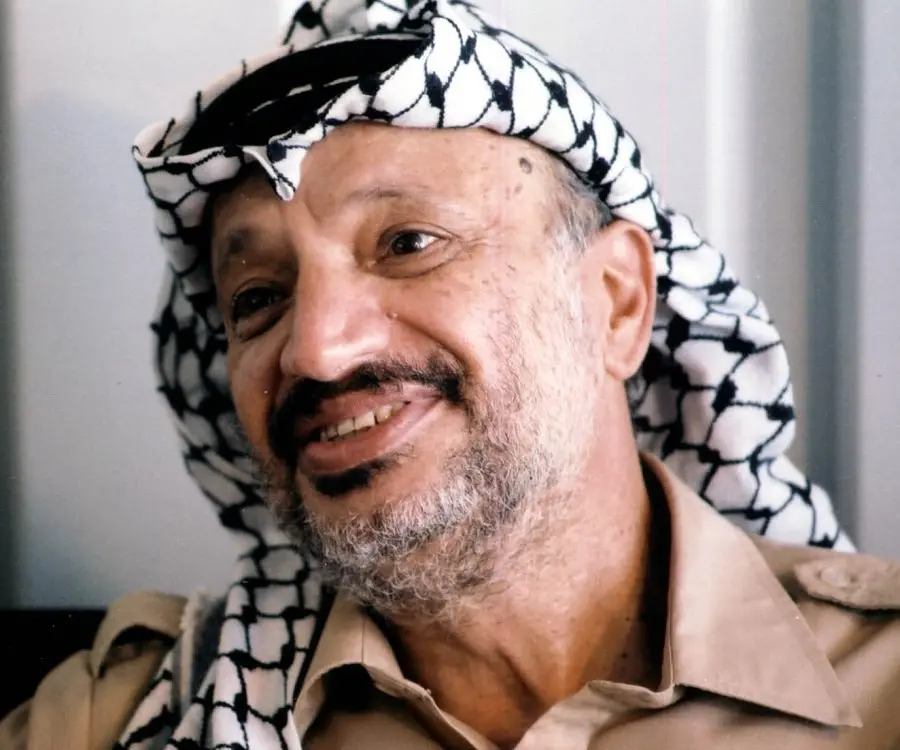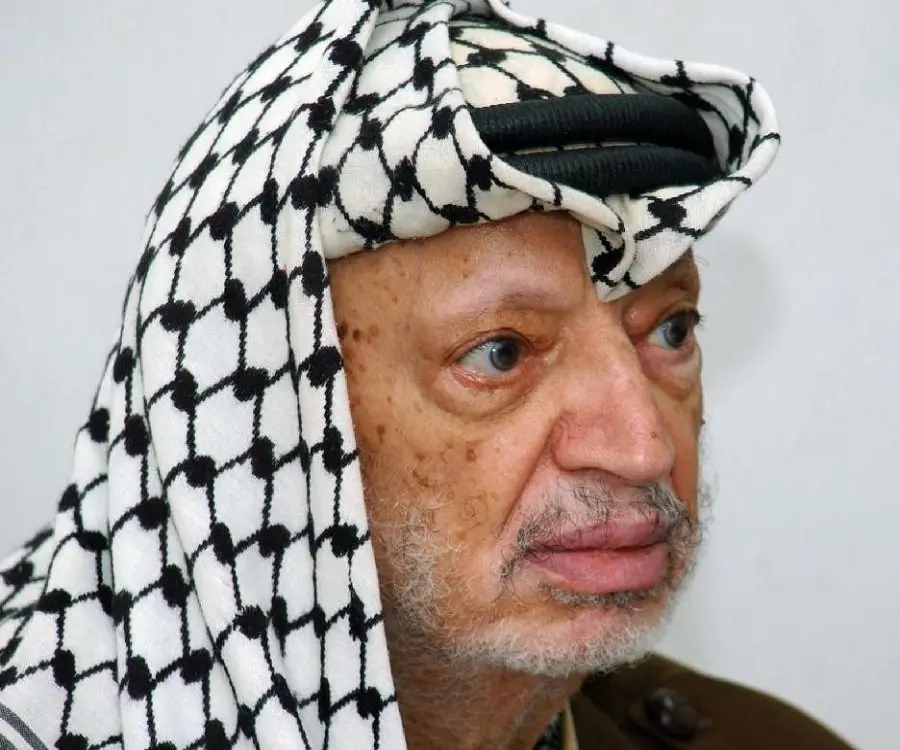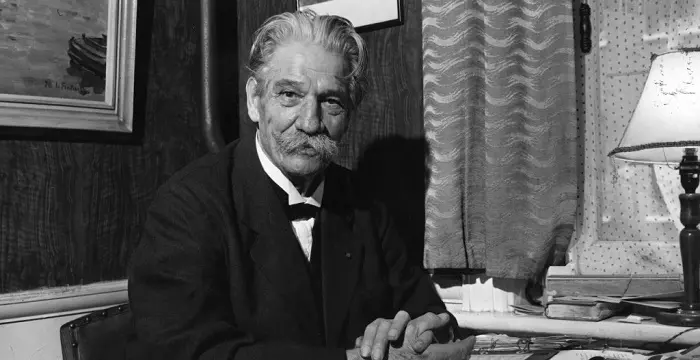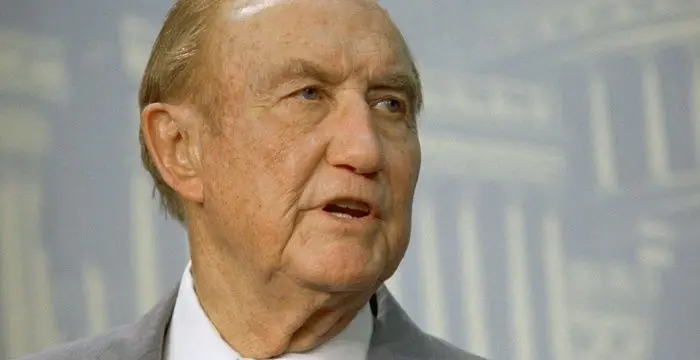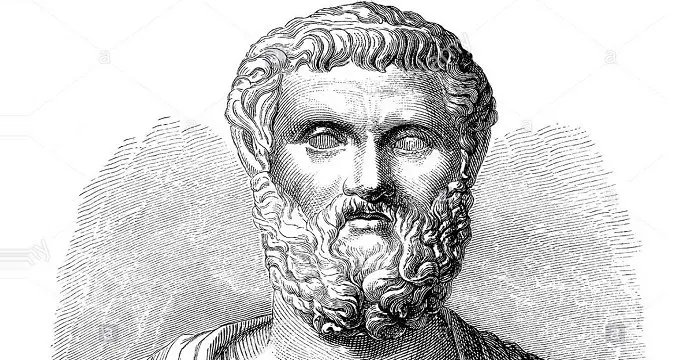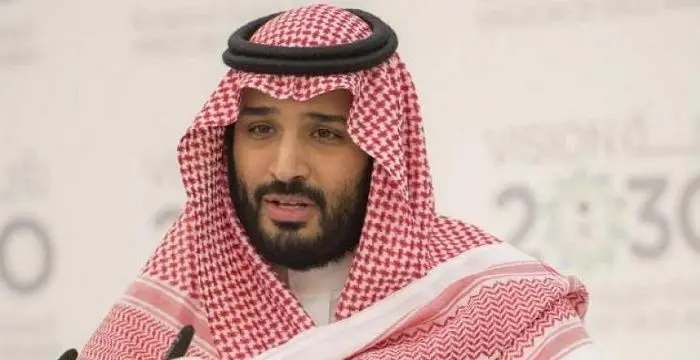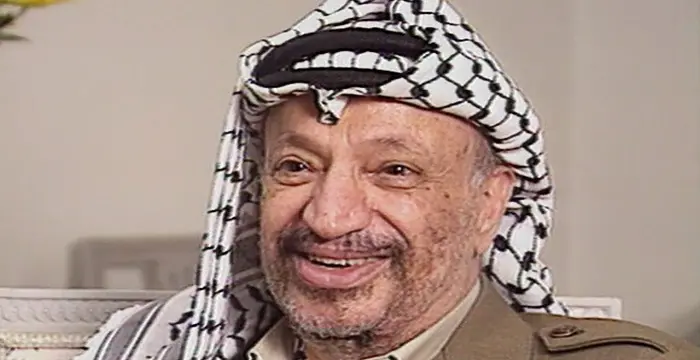
Yasser Arafat - 1st President of the Palestinian National Authority, Facts and Family
Yasser Arafat's Personal Details
Yasser Arafat was the first President of the Palestinian National Authority
| Information | Detail |
|---|---|
| Birthday | August 24, 1929 |
| Died on | November 11, 2004 |
| Nationality | Palestinian |
| Famous | Nobel Peace Prize, Leaders, Political Leaders, 1st President of the Palestinian National Authority |
| Spouses | Suha Arafat (m. 1990–2004) |
| Siblings | Fathi |
| Childrens | Zahwa Arafat |
| Universities |
|
| Birth Place | Cairo |
| Political Ideology | Fatah |
| Religion | Sunni Islam |
| Gender | Male |
| Father | Abdel Raouf al-Qudwa al-Husseini |
| Mother | Zahwa Abul Saud |
| Sun Sign | Virgo |
| Born in | Cairo |
| Famous as | 1st President of the Palestinian National Authority |
| Died at Age | 75 |
Yasser Arafat's photo
Who is Yasser Arafat?
Yasser Arafat was a leader of the state of Palestine and 1st President of the Palestinian National Authority. Arafat always referred to himself as the son of Jerusalem although some believe Cairo to be his actual place of birth. Indoctrinated into Arab nationalism early in his life, he started working for the Palestinian cause while he was still in his teens; later moving to Kuwait, where he cofounded Fata, being elected to its central committee at the very inception. By the age of 44, he became a full time revolutionist, organizing raids into Israel from their camps along Jordan-Israel border. Later, he became the Chairman of the PLO (Palestine Liberation Organization), which under his guidance emerged from being a puppet organization in the hands of Arab governments to an independent nationalist organization, based in Jordan. Waging relentless war against Israel, later on he took up diplomacy as a tool for achieving his ends and signed Oslo Accord in early 1990s. In 1994, Yasser Arafat was awarded the Nobel Peace Prize along with Shimon Peres and Yitzhak Rabin for his endeavor to bring peace into the region. Later when the Palestinian National Authority was formed, he was elected its President. Adored by his followers and hated by his detractors, Yasser Arafat remained an enigma till his death in 2004.
// Famous Leaders
Edi Rama
Edi Rama is the current Prime Minister of Albania. Check out this biography to know about his childhood, life, achievements, works & timeline.
Tecumseh
Tecumseh was a Native American leader of the Shawnee clan. This biography profiles his childhood, life and timeline.
Khalifa bin Zayed Al Nahyan
Sheikh Khalifa bin Zayed Al Nahyan is the current President of the United Arab Emirates (UAE). Check out this biography to know about his birthday, childhood, family life, achievements and fun facts about him.
Childhood & Early Years
Mohammed Yasser Abdel Rahman Abdel Raouf Arafat al-Qudwa, popularly known as Yasser Arafat, was born on 24 August 1929 most probably in Cairo. Some also claim that he was born in his maternal uncle’s house in Jerusalem where his mother, Zahwa Abul Saud, used to go for child-birth.
His father, Abdel Raouf al-Qudwa al-Husseini, was originally from Gaza City in Palestine; but later moved to Cairo to claim the legacy of his Egyptian mother. Although he failed to achieve his objective, he became a successful textile merchant, having his establishment in Cairo's religiously mixed Sakakini District.
Yasser Arafat was born sixth of his parents’ seven children, having a younger brother named Fathi Arafat. Among his older siblings were two brothers named Jamal and Mustafa and two sisters named Inam and Khadija.
In 1933, when he was four years old, his mother died from kidney ailment. Unable to raise his younger children by himself, his father sent him and his younger brother Fathi to live in Jerusalem with his childless maternal uncle, Salim Abul Saud.
In 1937, Yasser Arafat was brought back to Cairo. However, his father, by then married to an Egyptian woman, failed to provide any kind of emotional support to his eight year old son, resulting in a distant and often strained relationship between them.
During his school years, he spent his summer holidays at Jerusalem, growing an attachment to the city. In Cairo, he often visited the Jewish colonies and attended their religious ceremonies, wishing to understand them. Even his father’s thrashings could not stop this practice.
In 1944, Yasser Arafat entered the University of King Fuad I. Here he continued his association with Jews, engaging them in conversation in order to understand their mental set up. He also read the works of Zionist scholars like Theodor Herzl, one of the promoters of Zionist migration to Palestine.
During this period, he also joined the Federation of Palestinian Students and the Egyptian Union of Students. Taking part in political agitations, he also started a magazine called The Voice of Palestine.
Over time, he became involved with the members of the Palestinian Arab nationalist group, led by his cousins from the Husseini family of Jerusalem. By 1946, seventeen year old Arafat was procuring arms, retrieving weapons left by the Germans in the Egyptian deserts and smuggling them into Palestine.
On 15 May 1948, the British Mandate of Palestine came to an end, resulting in the formation of the State of Israel and subsequent Arab-Israeli War. Although Arafat set out to join the war, he was probably stopped on the way. Another report says, he fought in the Gaza region.
On his return home in early 1949, he enrolled at School of Engineering at the University of King Fuad I. In 1950, he joined the Muslim Brotherhood. Two years later, he was elected President of the General Union of Palestinian Students with their help, a position he held till 1956.
In 1956, he graduated with a degree in civil engineering. Later in the same years, as the Suez Crisis erupted, Arafat joined the war, fighting with the Egyptian Army against Israel, United Kingdom and France. Thereafter, he worked briefly in Egypt before settling in Kuwait.
Forming Al-Fatah
In Kuwait, Yasser Arafat was first employed in the department of public works; later, he opened his own contracting firm. Concurrently, he continued being involved in politics, contributing the profit from his business to the Palestinian cause.
In 1958, Arafat, along with Khalīl al-Wazīr, Ṣalāḥ Khalaf, and Khālid al-Ḥassan, he founded a new Palestinian nationalist movement called ‘Fatah’, a name derived from reverse acronym for ‘Harakat al-Tahrir al-Filastinivva’. In the same year, he was elected to its central committee.
Operating both as a political organization and an underground military outfit, Fatah advocated armed struggle against the Israelis. Following the model of guerrillas fighting in the Algerian War of Independence, they started preparing for guerilla warfare as early as in 1959.
In 1959, Arafat launched a magazine called ‘Filastin-na’ (Our Palestine), which also advocated an armed struggle against Israel. This was also the time, when he first started donning the checkered scarf, kufiyah, and adopted the fighting name ‘Abu Amar’.
To work independently, Yasser Arafat refused to take donations from Arab governments without actually alienating them. Instead, he started contacting well-to-do Palestinians living abroad for donations.
Sometime in 1962, Arafat moved to Syria with his closest companions and started recruiting fighters for an armed attack on Israel. By then, he was financially strong enough to afford reasonable salary for his soldiers.
Leader of PLO
In 1964, Arab countries floated an umbrella organization called Palestinian Liberation Organization (PLO). While Yasser Arafat kept in touch with it, he continued to work alone, setting up number of camps along Jordan-Israel border, carrying out his first armed operation on 31 December 1964.
He came to international limelight during the 1968 Battle of Karameh. As his face appeared on the cover of Time Magazine’s 13 December 1968 issue, Arafat’s position became stronger. Fatah now emerged as a dominant group within PLO, whose creditability was lost due to defeat in the Six-Days-War in 1967.
On 4 February, 1969, Arafat was elected Chairman of PLO. In this position, he had to work closely with other constituents, such as the Popular Front for the Liberation of Palestine and the Democratic Front for the Liberation of Palestine and cope with governmental interference.
By 1970, PLO started having trouble with the King of Jordan, who in September sent forces to raid fedayeen camps along its border, forcing them to migrate to Lebanon. Thereafter until 1982, they continued carrying on guerilla attack from their base in Lebanon.
In 1971, a breakaway group called ‘Black September’ was formed, who began to carry on terrorist attack in different locations. In reality, they took their orders from Fatah, while maintaining an apparent distance.
Since Lebanon had a weak central government, PLO was able to function more or less independently. During this period, different branches of the organization carried on guerilla attacks on different Israeli targets, both inside and outside the country, most famous of which was their attack at Munich Olympic in 1972.
The Munich incident, in which eleven Israeli players and three German policemen were killed, was criticized by international community. Subsequently, Yasser Arafat not only dissolved Black September, absorbing the members into other groups, but also decided not to attack Israeli targets on foreign soil.
Start of Diplomacy
Sometime in the early 1970s, especially after the Yom Kippur War in October 1973, Arafat realized the importance of diplomacy. He soon gave up the idea of liberating whole of Palestine, instead settling for an independent state comprising the West Bank and Gaza Strip, with East Jerusalem as its capital.
In a summit held in 1973-74, PLO was recognized as the sole representative of the Palestinian people by the Arab countries. As a result, the organization was allowed to open offices in different countries.
In November 1974, sponsored by Arab countries, Arafat addressed plenary session of the United Nations General Assembly as a representative of an NGO. In his speech, he said, "I have come bearing an olive branch and a freedom fighter's gun. Do not let the olive branch fall from my hand."
After the plenary session, a number of European countries began political dialogue with PLO. Israel, along with the USA, not only refused any contact, continuing to call it a terrorist organization, but also relentlessly tried to subdue the movement. On several occasions, they also tried to kill Arafat.
Apart from Israelis, Hafiz al-Assad of Syria was another of Arafat’s prime enemies. Assad was able to create a rift in the PLO rank with the aim of reorganizing PLO as a pro-Syrian organization. However, Arafat was able to retain his authority.
In August 1982, driven by an Israeli invasion, Yasser Arafat had to leave Lebanon. He now moved his headquarters to Tunis, Tunisia. He tried to return in the following year; but was stopped by his rival fraction, an action which actually bolstered his support and helped him to reaffirm his leadership.
Peace Process
The intifāḍah (protest) movement, which began in December 1987 and continued for next five years, directed the world’s attention to the plight of Palestinians in Israel, further consolidating Arafat’s position. He now changed his policies and was ready to negotiate with Israelis.
In November 1988, PLO, under Arafat’s leadership, recognized UN General Assembly Resolution 181. Concurrently, Arafat also announced the establishment of an independent Palestinian state, of which he was nominated president. Within days, more than 25 countries extended recognition to the government-in-exile.
Also in 1988, Arafat attended a special United Nations session in Geneva, Switzerland, where he renounced terrorism. He also said that the PLO supported "the right of all parties concerned in the Middle East conflict to live in peace and security, including the state of Palestine, Israel and other neighbours".
Oslo Accord
In September 1993, after series of secret negotiations, PLO Chairman Arafat and Israeli Prime Minister Rabin signed the famous Oslo Accord. According to the accord, Palestinian self-rule was to be implemented in West Bank and Gaza Strip along with removal of Israeli settlements from those areas over a five-year period.
In 1994, Arafat moved to Gaza City, taking control in the name of Palestinian National Authority (PNA), gradually, establishing rule of law. However, his struggle did not end here. Many Palestinian groups, including Hamas, continued to oppose the accord; so did many Israeli leaders.
In January 1996, Arafat was elected President of PNA. In this capacity, he continued to negotiate with world leaders. But his task became progressively difficult, especially after the assassination of Israeli Prime Minister Rabin and resurgence of terrorist attacks by Palestinian groups. Yet, he continued to work for the cause till his death.
Awards & Achievements
In 1994, a year after signing the Oslo Accord, Arafat received the Nobel Prize for Peace jointly with Yitzhak Rabin and Shimon Peres “for their efforts to create peace in the Middle East".
Personal Life & Legacy
On 17 July 1990, at the age of 61, Yasser Arafat married Suha Daoud Tawil, a 27 year old Roman Catholic. After marriage, she converted to Islam. Their only child, Zahwa, was born on 24 July 1995.
On 25 October 2004, Arafat was suddenly taken ill. He was shortly taken to Paris and admitted to the Percy military hospital, where he lapsed into coma on 3 November. He died on 11 November 2004 of a massive hemorrhagic cerebrovascular accident at the age of 75.
On 12 November, his body, draped in Palestinian Flag, was sent to Cairo, where a brief military funeral was held. It was attended by several heads of governments. Egypt's top Muslim cleric Sayed Tantawi led the prayers.
Although Arafat wished to be buried near the Al-Aqsa Mosque in Jerusalem, Israel authorities refused permission. Therefore, he was buried within the Mukataa in Ramallah in Cairo. His last rites were attended by tens of thousands of Palestinians.
On 10 November 2007, President Mahmoud Abbas, President of the Palestinian National Authority, unveiled a mausoleum for Arafat near his tomb.
// Famous Nobel Peace Prize
Emily Greene Balch
Emily Greene Balch was an American economist, sociologist and pacifist who won the 1946 Nobel Peace Prize. This biography of Emily Greene Balch provides detailed information about her childhood, life, achievements, works & timeline.
Norman Borlaug
Norman Borlaug was an American biologist known as the “Father of the Green Revolution”. This biography of Norman Borlaug provides detailed information about his childhood, life, achievements, works & timeline.
Albert Schweitzer
Albert Schweitzer was a German born French theologian, organist, philosopher, physician, and medical missionary. Check out this biography to know about his childhood, family life, and achievements.
Yasser Arafat's awards
| Year | Name | Award |
|---|---|---|
Other | ||
| 0 | 1994 - Nobel Peace Prize | |
| 0 | - Time's Person of the Year | |
| 0 | - Jawaharlal Nehru Award | |
Yasser Arafat biography timelines
- // 24th Aug 1929Mohammed Yasser Abdel Rahman Abdel Raouf Arafat al-Qudwa, popularly known as Yasser Arafat, was born on 24 August 1929 most probably in Cairo. Some also claim that he was born in his maternal uncle’s house in Jerusalem where his mother, Zahwa Abul Saud, used to go for child-birth.
- // 1933In 1933, when he was four years old, his mother died from kidney ailment. Unable to raise his younger children by himself, his father sent him and his younger brother Fathi to live in Jerusalem with his childless maternal uncle, Salim Abul Saud.
- // 1937In 1937, Yasser Arafat was brought back to Cairo. However, his father, by then married to an Egyptian woman, failed to provide any kind of emotional support to his eight year old son, resulting in a distant and often strained relationship between them.
- // 1944In 1944, Yasser Arafat entered the University of King Fuad I. Here he continued his association with Jews, engaging them in conversation in order to understand their mental set up. He also read the works of Zionist scholars like Theodor Herzl, one of the promoters of Zionist migration to Palestine.
- // 1946Over time, he became involved with the members of the Palestinian Arab nationalist group, led by his cousins from the Husseini family of Jerusalem. By 1946, seventeen year old Arafat was procuring arms, retrieving weapons left by the Germans in the Egyptian deserts and smuggling them into Palestine.
- // 1948On 15 May 1948, the British Mandate of Palestine came to an end, resulting in the formation of the State of Israel and subsequent Arab-Israeli War. Although Arafat set out to join the war, he was probably stopped on the way. Another report says, he fought in the Gaza region.
- // 1949On his return home in early 1949, he enrolled at School of Engineering at the University of King Fuad I. In 1950, he joined the Muslim Brotherhood. Two years later, he was elected President of the General Union of Palestinian Students with their help, a position he held till 1956.
- // 1956In 1956, he graduated with a degree in civil engineering. Later in the same years, as the Suez Crisis erupted, Arafat joined the war, fighting with the Egyptian Army against Israel, United Kingdom and France. Thereafter, he worked briefly in Egypt before settling in Kuwait.
- // 1958In 1958, Arafat, along with Khalīl al-Wazīr, Ṣalāḥ Khalaf, and Khālid al-Ḥassan, he founded a new Palestinian nationalist movement called ‘Fatah’, a name derived from reverse acronym for ‘Harakat al-Tahrir al-Filastinivva’. In the same year, he was elected to its central committee.
- // 1959Operating both as a political organization and an underground military outfit, Fatah advocated armed struggle against the Israelis. Following the model of guerrillas fighting in the Algerian War of Independence, they started preparing for guerilla warfare as early as in 1959.
- // 1959In 1959, Arafat launched a magazine called ‘Filastin-na’ (Our Palestine), which also advocated an armed struggle against Israel. This was also the time, when he first started donning the checkered scarf, kufiyah, and adopted the fighting name ‘Abu Amar’.
- // 1962Sometime in 1962, Arafat moved to Syria with his closest companions and started recruiting fighters for an armed attack on Israel. By then, he was financially strong enough to afford reasonable salary for his soldiers.
- // 1964In 1964, Arab countries floated an umbrella organization called Palestinian Liberation Organization (PLO). While Yasser Arafat kept in touch with it, he continued to work alone, setting up number of camps along Jordan-Israel border, carrying out his first armed operation on 31 December 1964.
- // 1968He came to international limelight during the 1968 Battle of Karameh. As his face appeared on the cover of Time Magazine’s 13 December 1968 issue, Arafat’s position became stronger. Fatah now emerged as a dominant group within PLO, whose creditability was lost due to defeat in the Six-Days-War in 1967.
- // 1969On 4 February, 1969, Arafat was elected Chairman of PLO. In this position, he had to work closely with other constituents, such as the Popular Front for the Liberation of Palestine and the Democratic Front for the Liberation of Palestine and cope with governmental interference.
- // 1970By 1970, PLO started having trouble with the King of Jordan, who in September sent forces to raid fedayeen camps along its border, forcing them to migrate to Lebanon. Thereafter until 1982, they continued carrying on guerilla attack from their base in Lebanon.
- // 1971In 1971, a breakaway group called ‘Black September’ was formed, who began to carry on terrorist attack in different locations. In reality, they took their orders from Fatah, while maintaining an apparent distance.
- // 1972Since Lebanon had a weak central government, PLO was able to function more or less independently. During this period, different branches of the organization carried on guerilla attacks on different Israeli targets, both inside and outside the country, most famous of which was their attack at Munich Olympic in 1972.
- // 1973Sometime in the early 1970s, especially after the Yom Kippur War in October 1973, Arafat realized the importance of diplomacy. He soon gave up the idea of liberating whole of Palestine, instead settling for an independent state comprising the West Bank and Gaza Strip, with East Jerusalem as its capital.
- // 1973In a summit held in 1973-74, PLO was recognized as the sole representative of the Palestinian people by the Arab countries. As a result, the organization was allowed to open offices in different countries.
- // Nov 1974In November 1974, sponsored by Arab countries, Arafat addressed plenary session of the United Nations General Assembly as a representative of an NGO. In his speech, he said, "I have come bearing an olive branch and a freedom fighter's gun. Do not let the olive branch fall from my hand."
- // 1982In August 1982, driven by an Israeli invasion, Yasser Arafat had to leave Lebanon. He now moved his headquarters to Tunis, Tunisia. He tried to return in the following year; but was stopped by his rival fraction, an action which actually bolstered his support and helped him to reaffirm his leadership.
- // 1987The intifāḍah (protest) movement, which began in December 1987 and continued for next five years, directed the world’s attention to the plight of Palestinians in Israel, further consolidating Arafat’s position. He now changed his policies and was ready to negotiate with Israelis.
- // 1988In November 1988, PLO, under Arafat’s leadership, recognized UN General Assembly Resolution 181. Concurrently, Arafat also announced the establishment of an independent Palestinian state, of which he was nominated president. Within days, more than 25 countries extended recognition to the government-in-exile.
- // 1988Also in 1988, Arafat attended a special United Nations session in Geneva, Switzerland, where he renounced terrorism. He also said that the PLO supported "the right of all parties concerned in the Middle East conflict to live in peace and security, including the state of Palestine, Israel and other neighbours".
- // 1990On 17 July 1990, at the age of 61, Yasser Arafat married Suha Daoud Tawil, a 27 year old Roman Catholic. After marriage, she converted to Islam. Their only child, Zahwa, was born on 24 July 1995.
- // 1993In September 1993, after series of secret negotiations, PLO Chairman Arafat and Israeli Prime Minister Rabin signed the famous Oslo Accord. According to the accord, Palestinian self-rule was to be implemented in West Bank and Gaza Strip along with removal of Israeli settlements from those areas over a five-year period.
- // 1994In 1994, Arafat moved to Gaza City, taking control in the name of Palestinian National Authority (PNA), gradually, establishing rule of law. However, his struggle did not end here. Many Palestinian groups, including Hamas, continued to oppose the accord; so did many Israeli leaders.
- // 1994In 1994, a year after signing the Oslo Accord, Arafat received the Nobel Prize for Peace jointly with Yitzhak Rabin and Shimon Peres “for their efforts to create peace in the Middle East".
- // 1996In January 1996, Arafat was elected President of PNA. In this capacity, he continued to negotiate with world leaders. But his task became progressively difficult, especially after the assassination of Israeli Prime Minister Rabin and resurgence of terrorist attacks by Palestinian groups. Yet, he continued to work for the cause till his death.
- // 2004On 25 October 2004, Arafat was suddenly taken ill. He was shortly taken to Paris and admitted to the Percy military hospital, where he lapsed into coma on 3 November. He died on 11 November 2004 of a massive hemorrhagic cerebrovascular accident at the age of 75.
// Famous Political Leaders
Edi Rama
Edi Rama is the current Prime Minister of Albania. Check out this biography to know about his childhood, life, achievements, works & timeline.
Khalifa bin Zayed Al Nahyan
Sheikh Khalifa bin Zayed Al Nahyan is the current President of the United Arab Emirates (UAE). Check out this biography to know about his birthday, childhood, family life, achievements and fun facts about him.
Leo Varadkar
Cam Leo Varadkar is the current Taoiseach—the Prime Minister—of the Republic of Ireland. Check out this biography to know about his childhood, family life, achievements and other facts about his life.
Strom Thurmond
Strom Thurmond was an American politician, who represented the state of South Carolina in the United States senate for 48 years.
Solon
Solon was an Athenian lawmaker, poet and politician. He is considered as one of the ‘Seven Wise Men’ in Greek culture. This biography provides detailed information about his childhood, life, career, works, achievements and timeline.
Mohammed bin Salman
Mohammed bin Salman is the Crown Prince of Saudi Arabia and the heir apparent to the throne. Check out this biography to know about his childhood, family life, achievements and other facts about him.
Yasser Arafat's FAQ
What is Yasser Arafat birthday?
Yasser Arafat was born at 1929-08-24
When was Yasser Arafat died?
Yasser Arafat was died at 2004-11-11
Where was Yasser Arafat died?
Yasser Arafat was died in Clamart
Which age was Yasser Arafat died?
Yasser Arafat was died at age 75
Where is Yasser Arafat's birth place?
Yasser Arafat was born in Cairo
What is Yasser Arafat nationalities?
Yasser Arafat's nationalities is Palestinian
Who is Yasser Arafat spouses?
Yasser Arafat's spouses is Suha Arafat (m. 1990–2004)
Who is Yasser Arafat siblings?
Yasser Arafat's siblings is Fathi
Who is Yasser Arafat childrens?
Yasser Arafat's childrens is Zahwa Arafat
What was Yasser Arafat universities?
Yasser Arafat studied at University of King Fuad I
What is Yasser Arafat's political ideology?
Yasser Arafat's political ideology is Fatah
What is Yasser Arafat's religion?
Yasser Arafat's religion is Sunni Islam
Who is Yasser Arafat's father?
Yasser Arafat's father is Abdel Raouf al-Qudwa al-Husseini
Who is Yasser Arafat's mother?
Yasser Arafat's mother is Zahwa Abul Saud
What is Yasser Arafat's sun sign?
Yasser Arafat is Virgo
How famous is Yasser Arafat?
Yasser Arafat is famouse as 1st President of the Palestinian National Authority

